
Relative & Dimensional Space Lesson Plan
CLICK ICONS TO JUMP DIRECTLY TO EACH SUBJECT ON THIS PAGE
RELATIVE & DIMENSIONAL SPACE
LESSON PLAN
This page is a free-shared lesson plan archive for teaching all educational subjects within the context and theme of “Relative and Dimensional Space.” It is purposed for use in community education environments, homeschool environments, traditional schooling environments, or as a supplemental and fun addition to any education program. As part of the complete Education for Life Program, this lesson plan is specifically designed to work in conjunction with the other primary education program components: Foundations of Teaching, Curriculum, Teaching Strategies, Learning Tools and Toys, Evaluation Model, and The Ultimate Classroom. If you’d like to learn how all these components work together, click here. Click here for the specifics focused on just using the lesson plans:
CLICK HERE FOR A DETAILED TUTORIAL ON HOW TO USE THIS LESSON PLAN
NOTE: The colors are provided as a possible linear progression (red/easiest to violet/most challenging) for people that might prefer a more linear structure. Our core philosophy, however, is that through creativity every color can be made easy or challenging for any learning level.
RELATED PAGES (mouse-over for descriptions and click for complete pages)
EDUCATION OVERVIEW | HOW TO USE THIS COMPONENT | OUR OPEN SOURCE PURPOSE
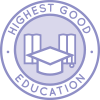
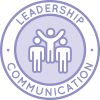
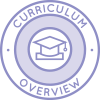
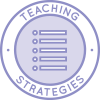
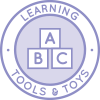
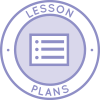
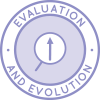
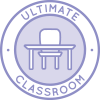
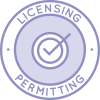

WAYS TO CONTRIBUTE TO EVOLVING THIS EDUCATION PROGRAM WITH US
SUGGESTIONS | CONSULTING | MEMBERSHIP | OTHER OPTIONS
A NOTE ABOUT ALL ONE COMMUNITY LESSON PLANS
The One Community lesson plans are intentionally designed for use in ANY educational environment and with ALL educational, cultural, religious/spiritual, and philosophical approaches to teaching and learning. They are designed without an ideological approach and specifically so they can be adapted to include the views, preferences, methodologies, and/or ideologies preferred by different parents and teachers.
For maximum flexibility and adaptation, they are also designed to be combined to teach multiple subjects at the same time. Doing this increases the creativity, effectiveness, and fun of your learning environment. Once we are on the property and operating our version of the complete school and Education for Life program, we will be adding video examples of how to combine the lessons. In the meantime, visit the Teaching Strategies page for a list of suggestions.
ARTS AND TRADES
CLICK HERE FOR THE COMPLETE SUBJECT OUTLINE FOR ARTS & TRADES
TEACHING ARTS AND TRADES WITHIN THE CONTEXT OF SPACELearning about perspective in painting and drawing. Learning about landscape design and proper building arrangement, marching band movements, how to use space in dance. Exploring 2-D art vs 3-D art and design across all mediums. | |
| | The Arts
|
 | Trades
|
| CLICK HERE TO EMAIL US IF YOU HAVE AN IDEA TO ADD TO THIS SECTION |
* Please note that anything with an asterisk is just a suggestion. The diversity of options with asterisks are interchangeable and purposed to stimulate your own ideas. Any one of these suggestions could be replaced with a written paper, any form of art project (drawing, painting, music, paper mache, clay, wood, knitting/embroidery, metals, etc. etc.), an experiment, a presentation, a mindmap, a computer program, a web design project, a piece of poetry or a song, an interpretive dance or play, a group project, or anything else. What we feel is most important is that both the Learner and the Teacher agree on an exercise/activity they both feel would be maximally engaging, fun, and effective. If you come up with an idea we haven’t already thought of, please share it with us.
ENGLISH
CLICK HERE FOR THE COMPLETE SUBJECT OUTLINE FOR ENGLISH
Note: Any language can be substituted for English. The subject is listed here as “English” because that is the primary language of most of the people on the team, and the official language of the country we’re building our initial location in.
TEACHING ENGLISH WITHIN THE CONTEXT OF SPACELearning and working with space and dimensional terms (length, width, height, depth, breadth, etc.). Learning about “lects”, styles of speaking specific for particular social settings, spaces, and environments. Exploring how length and breadth of writing and literature changes them. | |
 |
|
| CLICK HERE TO EMAIL US IF YOU HAVE AN IDEA TO ADD TO THIS SECTION |
* Please note that anything with an asterisk is just a suggestion. The diversity of options with asterisks are interchangeable and purposed to stimulate your own ideas. Any one of these suggestions could be replaced with a written paper, any form of art project (drawing, painting, music, paper mache, clay, wood, knitting/embroidery, metals, etc. etc.), an experiment, a presentation, a mindmap, a computer program, a web design project, a piece of poetry or a song, an interpretive dance or play, a group project, or anything else. What we feel is most important is that both the Learner and the Teacher agree on an exercise/activity they both feel would be maximally engaging, fun, and effective. If you come up with an idea we haven’t already thought of, please share it with us.
HEALTH
CLICK HERE FOR THE COMPLETE SUBJECT OUTLINE FOR HEALTH
TEACHING HEALTH WITHIN THE CONTEXT OF SPACELearning about personal space (hygiene, arrangement, managing) and learning about the human body as your inner space (personal hygiene, healthy diet, exercises, etc.). Learning about the scientific connections between emotions (internal space) and health (external space). | |
 |
|
| CLICK HERE TO EMAIL US IF YOU HAVE AN IDEA TO ADD TO THIS SECTION |
* Please note that anything with an asterisk is just a suggestion. The diversity of options with asterisks are interchangeable and purposed to stimulate your own ideas. Any one of these suggestions could be replaced with a written paper, any form of art project (drawing, painting, music, paper mache, clay, wood, knitting/embroidery, metals, etc. etc.), an experiment, a presentation, a mindmap, a computer program, a web design project, a piece of poetry or a song, an interpretive dance or play, a group project, or anything else. What we feel is most important is that both the Learner and the Teacher agree on an exercise/activity they both feel would be maximally engaging, fun, and effective. If you come up with an idea we haven’t already thought of, please share it with us.
MATH
CLICK HERE FOR THE COMPLETE SUBJECT OUTLINE FOR MATH
TEACHING MATH WITHIN THE CONTEXT OF SPACECalculating space and dimensions, exploring geometric figures, etc. Calculating distances to planets, ratios to and of planets to each other, time to reach the sun, distances of states, cities, countries, planets, stars, galaxies etc. Graphing in 2 and 3-D, angles, understanding metric and non-metric units of measure, etc. | |
 |
|
 |
|
| CLICK HERE TO EMAIL US IF YOU HAVE AN IDEA TO ADD TO THIS SECTION |
* Please note that anything with an asterisk is just a suggestion. The diversity of options with asterisks are interchangeable and purposed to stimulate your own ideas. Any one of these suggestions could be replaced with a written paper, any form of art project (drawing, painting, music, paper mache, clay, wood, knitting/embroidery, metals, etc. etc.), an experiment, a presentation, a mindmap, a computer program, a web design project, a piece of poetry or a song, an interpretive dance or play, a group project, or anything else. What we feel is most important is that both the Learner and the Teacher agree on an exercise/activity they both feel would be maximally engaging, fun, and effective. If you come up with an idea we haven’t already thought of, please share it with us.
SCIENCE
CLICK HERE FOR THE COMPLETE SUBJECT OUTLINE FOR SCIENCE
TEACHING SCIENCE WITHIN THE CONTEXT OF SPACEHow species change over time, life cycles, and time periods of alive and extinct plants, animals, and humans, defining the age of rocks, plants, trees, etc, time zones, weather and climate changes in different periods (summer, fall, winter, spring), the lifespan of stars and planets, radioactive decay, relativity, etc, the history of science and how science has changed over time (computers, physical science, astronomy, geology, chemistry, biology, etc.). | |
Life Sciences
| |
Physical Sciences
| |
Earth Sciences
| |
| CLICK HERE TO EMAIL US IF YOU HAVE AN IDEA TO ADD TO THIS SECTION |
* Please note that anything with an asterisk is just a suggestion. The diversity of options with asterisks are interchangeable and purposed to stimulate your own ideas. Any one of these suggestions could be replaced with a written paper, any form of art project (drawing, painting, music, paper mache, clay, wood, knitting/embroidery, metals, etc. etc.), an experiment, a presentation, a mindmap, a computer program, a web design project, a piece of poetry or a song, an interpretive dance or play, a group project, or anything else. What we feel is most important is that both the Learner and the Teacher agree on an exercise/activity they both feel would be maximally engaging, fun, and effective. If you come up with an idea we haven’t already thought of, please share it with us.
SOCIAL SCIENCES
CLICK HERE FOR THE COMPLETE SUBJECT OUTLINE FOR SOCIAL SCIENCES
TEACHING SOCIAL SCIENCES WITHIN THE CONTEXT OF SPACELearning about the history of early formations (first settlements, their location; first influential cities and states). Exploring the social organization of cultures including the following spacial designations: community, region, area, state, country. Learning about different types of dwelling spaces for different cultures (who shares how much space – who lives in one building/room etc). Learning how different cultures describe space and spacial concepts. | |
 |
|
 |
|
 |
|
 | Foreign Languages (Each of the following is to be completed in the foreign language(s) being studied)
|
 |
|
| CLICK HERE TO EMAIL US IF YOU HAVE AN IDEA TO ADD TO THIS SECTION |
* Please note that anything with an asterisk is just a suggestion. The diversity of options with asterisks are interchangeable and purposed to stimulate your own ideas. Any one of these suggestions could be replaced with a written paper, any form of art project (drawing, painting, music, paper mache, clay, wood, knitting/embroidery, metals, etc. etc.), an experiment, a presentation, a mindmap, a computer program, a web design project, a piece of poetry or a song, an interpretive dance or play, a group project, or anything else. What we feel is most important is that both the Learner and the Teacher agree on an exercise/activity they both feel would be maximally engaging, fun, and effective. If you come up with an idea we haven’t already thought of, please share it with us.
TECHNOLOGY AND INNOVATION
CLICK HERE FOR THE COMPLETE SUBJECT OUTLINE FOR TECHNOLOGY AND INNOVATION
TEACHING TECHNOLOGY & INNOVATION WITHIN THE CONTEXT OF SPACEInnovative approaches and creations related to how people use space in the context of buildings and living spaces, using technology to measure space and distance, using technology for design and layout work. | |
Technology
| |
| | Innovation
|
| CLICK HERE TO EMAIL US IF YOU HAVE AN IDEA TO ADD TO THIS SECTION |
* Please note that anything with an asterisk is just a suggestion. The diversity of options with asterisks are interchangeable and purposed to stimulate your own ideas. Any one of these suggestions could be replaced with a written paper, any form of art project (drawing, painting, music, paper mache, clay, wood, knitting/embroidery, metals, etc. etc.), an experiment, a presentation, a mindmap, a computer program, a web design project, a piece of poetry or a song, an interpretive dance or play, a group project, or anything else. What we feel is most important is that both the Learner and the Teacher agree on an exercise/activity they both feel would be maximally engaging, fun, and effective. If you come up with an idea we haven’t already thought of, please share it with us.
VALUES
CLICK HERE FOR THE COMPLETE SUBJECT OUTLINE FOR VALUES
TEACHING VALUES WITHIN THE CONTEXT OF SPACESharing space with others, learning about interconnectedness, and learning strategies for positively and proactively affecting the internal and external environments of others. | |
 |
|
| CLICK HERE TO EMAIL US IF YOU HAVE AN IDEA TO ADD TO THIS SECTION |
* Please note that anything with an asterisk is just a suggestion. The diversity of options with asterisks are interchangeable and purposed to stimulate your own ideas. Any one of these suggestions could be replaced with a written paper, any form of art project (drawing, painting, music, paper mache, clay, wood, knitting/embroidery, metals, etc. etc.), an experiment, a presentation, a mindmap, a computer program, a web design project, a piece of poetry or a song, an interpretive dance or play, a group project, or anything else. What we feel is most important is that both the Learner and the Teacher agree on an exercise/activity they both feel would be maximally engaging, fun, and effective. If you come up with an idea we haven’t already thought of, please share it with us.
OTHER RESOURCES
We're building a resource section. Click here if you have a suggestion or resource for this page.
OPEN SOURCE SUBJECT RESOURCES (click icons for complete pages)
OPEN SOURCE CURRICULUM OUTLINES (click image for summaries and links to complete pages)
CARE
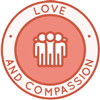
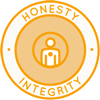
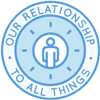
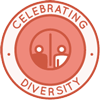
SHARE
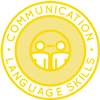
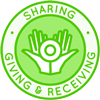
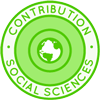
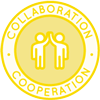
PLAY
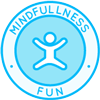
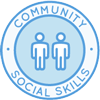
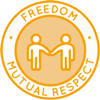
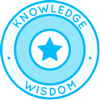
OPEN SOURCE TEACHING METHODOLOGY SUMMARIES
Montessori | Waldorf | Orff | Reggio | Multi-Intelligence | Bloom's Taxonomy | Study Tech | I-WE
INDEX OF ALL THE ONE COMMUNITY OPEN SOURCE LESSON PLANS
THE WORLD'S LARGEST ONLINE FREE EDUCATION RESOURCE ARCHIVE
RELATED CONTENT AND OTHER RELATED RESOURCES
We're building this resource section. Click here if you have a suggestion or resource for this page.
WHO WE ARE
MAIN OPEN SOURCE HUBS
EDUCATION COMPONENTS
CURRICULUM OUTLINES
- Core Curriculum
- Collaboration and Cooperation
- Communication and Language Skills
- Community, Family, and Social Skills
- Contribution, Global Perspectives, & Social Science
- Diversity, Differences, and Similarities
- Freedom and Celebrating Other Perspectives
- Honesty and Integrity
- Interconnectedness & Our Relationship to All Things
- Knowledge and Wisdom
- Love, Connection, and Compassion
- Mindfulness and Fun
- Sharing, Giving, and Receiving
LESSON PLANS
- Lesson Plans How-to
- Beliefs Lesson Plan
- Caring and Kindness Lesson Plan
- Civilization Lesson Plan
- Cognition Lesson Plan
- Communication Lesson Plan
- Consciousness Lesson Plan
- Content and “Our Inner World” Lesson Plan
- Contribution Lesson Plan
- Cooperation and Collaboration Lesson Plan
- Cosmos Lesson Plan
- Courage Lesson Plan
- Creativity Lesson Plan
- Diversity Lesson Plan
- Dreams Lesson Plan
- Emotional States Lesson Plan
- Energy Lesson Plan
- Fall Lesson Plan
- Form and “Our Outer World” Lesson Plan
- Freedom Lesson Plan
- Happiness Lesson Plan
- Harmony Lesson Plan
- Highest Good Lesson Plan
- Honesty and Integrity Lesson Plan
- Human Body Lesson Plan
- Humility Lesson Plan
- Individuality Lesson Plan
- Information Lesson Plan
- Matter & Materials Lesson Plan
- Movement and Development Lesson Plan
- Nature Lesson Plan
- Open Source Lesson Plan
- Opposites Lesson Plan
- Outer Space Lesson Plan
- Personal Growth Lesson Plan
- Planet Earth Lesson Plan
- Quality and Quantity Lesson Plan
- Reality Lesson Plan
- Recreation and Relaxation Lesson Plan
- Relative & Dimensional Space Lesson Plan
- Sharing Lesson Plan
- Signs and Symbols Lesson Plan
- Social Relationships Lesson Plan
- Spring Lesson Plan
- Summer Lesson Plan
- Time Lesson Plan
- Winter Lesson Plan
- Work Lesson Plan
 One Community
One Community




